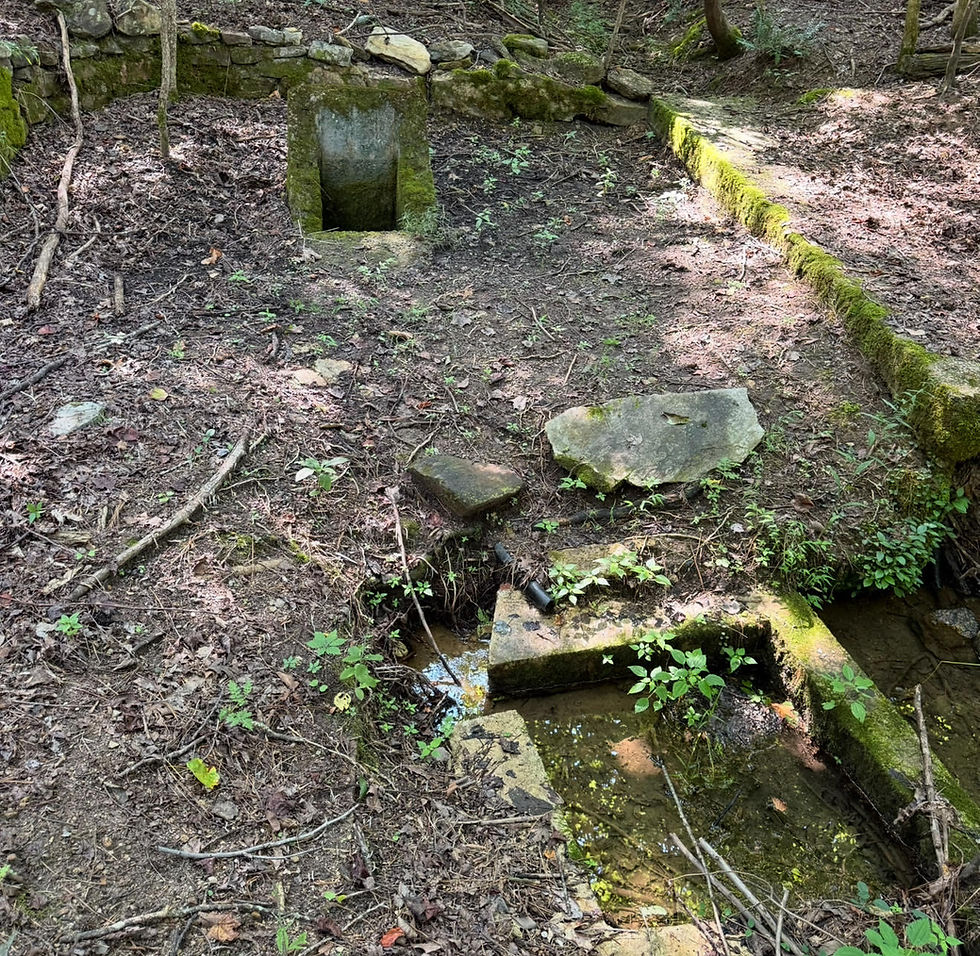The Lost History of Eastern North America’s Ancient Walls
- Robert Scott Davis Jr.

- Feb 23, 2024
- 3 min read

Many millions in eastern North America live within a short distance of amazing
ruins as old as two millennia but do not know it. Mysterious as they are accessible, these earth and stone cairns, mounds, and walls in the shapes of birds, snakes, and vortexes are only fully appreciated from the air! This local Native American engineering, ideology, and religion are found from Canada to Crystal River, Florida.
Kentucky, Ohio, and West Virginia are the most famous of these many sites.
Confederate soldiers preempted the circular walls near Lookout Mountain, Tennessee as fortifications in 1863. Cartographers, desperate to note any landmarks in a largely unknown Civil War America, included these ruins in North Georgia on their maps. Today, hunters find strange stone works in the woods and wonder who built them and why. Some of these constructions undoubtedly remain undiscovered.
These works are from the Hopewell (ca. 100 BCE to ca. 500 CE) cult, cultures,
enigma, presence, religion, tradition, etc., named for the largest earthen works east of the Mississippi River, now the Hopewell Culture National Historical Park near
Chillicothe, Ohio. One mound of the period of the walls also stands in Florence,
Alabama, at more than forty feet high. The people of the Woodland Period traded across the continent and manufactured among the best of ancient American art, including marble statuary during the same period of the great marble work of the Renaissance. Hopewell works, however, had limitations due to not having the same metal tools.
Visitors to the ruins in modern parks hear whimsical tales of Madoc, a pre-
Columbian Welsh priest in a balloon; Mayans; and Spanish soldiers building the walls. Famed historian Bernard DeVoto, however, ridiculed the idea that these works are European “there were piles of what seemed to be masonry which were [wrongly presumed to be] beyond the ability of the Indians to construct” and “copper was one of the truth’s most eloquent witnesses [for Europeans] for the Indians did not know how to smelt.” [Native Americans did work in copper.]
This Hopewell Culture remains found in the southeastern United States are also
designated as the Swift Creek Culture of 100 to 700 CE. Dozens, maybe hundreds, of its walls and cairns have existed in the Deep South. Only the Old Stone Fort site near Manchester, Tennessee, has received serious modern research. Radiocarbon dating places the building of its walls over time from 30 to 450 CE.
The ruins vary widely. At Fort Mountain State Park near Chatsworth, Georgia, the
wall resembles a snake, while the formation at Fort Mountain near Blairsville, Georgia, has a shape like a vortex (a symbol also found carved in stone at nearby Track Rock Gap and on Mole Hill near Marble Hill, Georgia). Some walls enclose large areas such as Old Stone Fort State Archaeological Park. The Kensington Site near Chattanooga has an aboriginal wall, as does Rocky Face in Whitfield County, Georgia. Other sites include the Chatahospee in Chambers County, Alabama, with its bird-shaped mound and a spiral vortex mound. A similar formation is the Kenimer Site at Brasstown Bald in Union County, Georgia. Indian mounds shaped like buzzards at Rock Eagle, Georgia, are near the Devil's Half Acre Walls.

Similar rock formations are natural or built by farmers in the last 200 years,
however. Debate continues on the origins of Henderson Mountain and Rich Mountain sites in Pickens County, Georgia. From the 1940s to the 1960s, Margaret Perryman explored petroglyphs (stone carvings) and ancient statues of animals in the southeastern United States that potentially are also from the Hopewell Culture.

Of an estimated 1,000,000 pre-Columbian Native American sites, ten percent have
been destroyed such as the Hopewell wall atop Mount Oglethorpe in Pickens County, Georgia. In the 1920s, it was used to build a monument to one of Georgia’s founders, James Oglethorpe. Two Hopewell sites are closed to the public for their protection from looters and treasure hunters. Perryman discovered that vandals had damaged and stolen many stone carvings that they mistakenly believed were treasure maps. An earthquake destroyed much of the wall atop Stone Mountain near Atlanta.
After 1897, local people dug pits in the wall at today's Fort Mountain State Park,
near Chatsworth, Georgia, looking for treasure. They found nothing as the ancient
builders kept their sites clean. (Gold mines did exist nearby.) Later stories claim the pits were fortifications or honeymoon nests for Cherokee newlyweds!
Mysteries remain. No one knows why the great mounds and walls were built, but
one theory is that some tremendous celestial event inspired the shapes. Such a
spectacular occurrence could explain why similar images are found worldwide and why the Hopewell walls are believed to be artifacts-free. A radical environmental change could have brought an end to the Hopewell world, but war could have destroyed trading networks and brought down this amazing Native American culture.
To read more on the sites in Pickens County, click the following link.



Delighted to see this website. There is so much forgotten and little known history in northern Georgia.